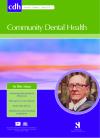Community Dental Health

- Cover Date:
- March 2013
- Print ISSN:
- 0265 539X
- Vol:
- 30
- Issue:
- 1
Oral health literacy comparisons between Indigenous Australians and American Indians
doi:10.1922/CDH_3025Jamieson06
Objectives: To compare oral health literacy (OHL) levels between two profoundly disadvantaged groups, Indigenous Australians and American Indians, and to explore differences in socio-demographic, dental service utilisation, self-reported oral health indicators, and oral health-related quality of life (OHRQoL) correlates of OHL among the above. Methods: OHL was measured using REALD-30 among convenience samples of 468 Indigenous Australians (aged 17–72 years, 63% female) and 254 female American Indians (aged 18–57 years). Covariates included socio-demography, dental utilisation, self-reported oral health status (OHS), perceived treatment needs and OHRQoL (prevalence, severity and extent of OHIP-14 ‘impacts’). Descriptive and bivariate methods were used for data presentation and analysis, and between-sample comparisons relied upon empirical contrasts of sample-specific estimates and correlation coefficients. Results: OHL scores were: Indigenous Australians - 15.0 (95% CL=14.2, 15.8) and American Indians - 13.7 (95% CL=13.1, 14.4). In both populations, OHL strongly correlated with educational attainment, and was lower among participants with infrequent dental attendance and perceived restorative treatment needs. A significant inverse association between OHL and prevalence of OHRQoL impacts was found among American Indians (rho=-0.23; 95% CL=-0.34, -0.12) but not among Indigenous Australians. Conclusions: Our findings indicate that OHL levels were comparable between the two groups and lower compared to previously reported estimates among diverse populations. Although the patterns of association of OHL with most examined domains of correlates were similar between the two groups, this study found evidence of heterogeneity in the domains of self-reported OHS and OHRQoL.
Key words: oral health literacy, oral health, Indigenous populations, Australian Indigenous, Native American, American Indian, quality of life
- Article Price
- £15.00
- Institution Article Price
- £
- Page Start
- 52
- Page End
- 57
- Authors
- L.M. Jamieson, K. Divaris, E.J. Parker, J.Y. Lee
Articles from this issue
- Title
- Pg. Start
- Pg. End
- Editorial - The British Association for the Study of Community Dentistry at forty: our professional project
- 2
- 4
- Dental Public Health in Action - Challenges encountered when conducting a dental health needs assessment of older people resident in care homes: experience from England
- 6
- 9
- Fluoridation and dental caries severity in young children treated under general anaesthesia: an analysis of treatment records in a 10-year case series
- 15
- 18
- Attitudes towards the use of fluorides for oral health among Islamic clerics in Kelantan Province, Malaysia
- 30
- 33
- The views of examiners on the use of intra-oral photographs to detect dental caries in epidemiological studies
- 34
- 38
- Caries experience and treatment need in adults with intellectual disabilities in two German regions
- 39
- 44
- Attitudes towards establishing a daily supervised school-based toothbrushing programme - determined by Q-sort methodology
- 45
- 51
